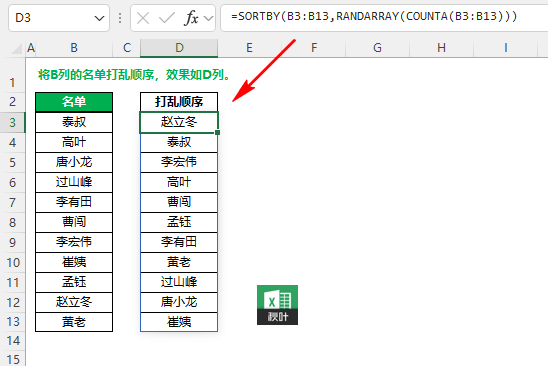2.添加读取excel数据的接口类:


添加读取excel的接口类:

3、添加完成后,找到这几个接口类的头文件,注释/删除 下图红框中的引入语句
注意:每个接口类的头文件都需进行处理。

4、添加源文件
excel.h文件:
#pragma once
#include "CApplication.h"
#include "CRange.h"
#include "CWorkbook.h"
#include "CWorkbooks.h"
#include "CWorksheet.h"
#include "CWorksheets.h"
#include "stdafx.h"
class Excel
{
public:
Excel();
~Excel();
void show(bool bShow);
//检查一个cell是否为字符串
bool isCellString(long iRow, long iColumn);
//检查一个cell是否为数值
bool isCellInt(long iRow, long iColumn);
//得到一个cell的string
CString getCellString(long iRow, long iColumn);
//得到一个cell的总数
int getCellInt(long iRow, long iColumn);
//得到一个cell的double数据
double getCellDouble(long iRow, long iColumn);
//取得行的总数
int getRowCount();
//取得列的总数
int getColumnCount();
//使用某个shell
bool loadSheet(long tableId, bool preLoaded = false);
bool loadSheet(CString sheet, bool preLoaded = false);
//通过序号取得某个sheet的名称
CString getSheetName(long tableID);
//得到sheet的总数
int getSheetCount();
//打开excel文件
bool open(const char* fileName);
//关闭打开的excel文件
void close(bool ifSave = false);
//另存为一个excel文件
void saveAsXLSFile(const CString &xlsFile);
//取得打开文件的名称
CString getOpenFileName();
//取得打开sheel的名称
CString getOpenSheelName();
//向cell中写入一个int值
void setCellInt(long iRow, long iColumn, int newInt);
//向cell中写入一个字符串
void setCellString(long iRow, long iColumn, CString newString);
public:
//初始化 Excel_OLE
static bool initExcel();
//释放Excel_OLE
static void release();
//取得列的名称
static char* getColumnName(long iColumn);
protected:
void preLoadSheet();
private:
CString openFileName;
CWorkbook workBook; //当前处理的文件
CWorkbooks books; //ExcelBook集合,多文件时使用
CWorksheet workSheet; //当前使用sheet
CWorksheets sheets; //Excel的sheet集合
CRange currentRange; //当前操作区域
bool isLoad; //是否已经加载了某个sheet数据
COleSafeArray safeArray;
protected:
static CApplication application; //Excel进程实例
};excel.cpp文件
//Excel.cpp
#include "stdafx.h"
#include <tchar.h>
#include "Excel.h"
COleVariant
covTrue((short)TRUE),
covFalse((short)FALSE),
covOptional((long)DISP_E_PARAMNOTFOUND, VT_ERROR);
CApplication Excel::application;
Excel::Excel() :isLoad(false)
{
}
Excel::~Excel()
{
//close();
}
bool Excel::initExcel()
{
//创建Excel 2000服务器(启动Excel)
if (!application.CreateDispatch(_T("Excel.application"), nullptr))
{
MessageBox(nullptr, _T("创建Excel服务失败,你可能没有安装EXCEL,请检查!"), _T("错误"), MB_OK);
return FALSE;
}
application.put_DisplayAlerts(FALSE);
return true;
}
void Excel::release()
{
application.Quit();
application.ReleaseDispatch();
application = nullptr;
}
bool Excel::open(const char* fileName)
{
//先关闭文件
close();
//利用模板建立新文档
books.AttachDispatch(application.get_Workbooks(), true);
LPDISPATCH lpDis = nullptr;
lpDis = books.Add(COleVariant(CString(fileName)));
if (lpDis)
{
workBook.AttachDispatch(lpDis);
sheets.AttachDispatch(workBook.get_Worksheets());
openFileName = fileName;
return true;
}
return false;
}
void Excel::close(bool ifSave)
{
//如果文件已经打开,关闭文件
if (!openFileName.IsEmpty())
{
//如果保存,交给用户控制,让用户自己存,如果自己SAVE,会出现莫名的等待
if (ifSave)
{
//show(true);
}
else
{
workBook.Close(COleVariant(short(FALSE)), COleVariant(openFileName), covOptional);
books.Close();
}
//清空打开文件名称
openFileName.Empty();
}
sheets.ReleaseDispatch();
workSheet.ReleaseDispatch();
currentRange.ReleaseDispatch();
workBook.ReleaseDispatch();
books.ReleaseDispatch();
}
void Excel::saveAsXLSFile(const CString &xlsFile)
{
workBook.SaveAs(COleVariant(xlsFile),
covOptional,
covOptional,
covOptional,
covOptional,
covOptional,
0,
covOptional,
covOptional,
covOptional,
covOptional,
covOptional);
return;
}
int Excel::getSheetCount()
{
return sheets.get_Count();
}
CString Excel::getSheetName(long tableID)
{
CWorksheet sheet;
sheet.AttachDispatch(sheets.get_Item(COleVariant((long)tableID)));
CString name = sheet.get_Name();
sheet.ReleaseDispatch();
return name;
}
void Excel::preLoadSheet()
{
CRange used_range;
used_range = workSheet.get_UsedRange();
VARIANT ret_ary = used_range.get_Value2();
if (!(ret_ary.vt & VT_ARRAY))
{
return;
}
//
safeArray.Clear();
safeArray.Attach(ret_ary);
}
//按照名称加载sheet表格,也可提前加载所有表格
bool Excel::loadSheet(long tableId, bool preLoaded)
{
LPDISPATCH lpDis = nullptr;
currentRange.ReleaseDispatch();
currentRange.ReleaseDispatch();
lpDis = sheets.get_Item(COleVariant((long)tableId));
if (lpDis)
{
workSheet.AttachDispatch(lpDis, true);
currentRange.AttachDispatch(workSheet.get_Cells(), true);
}
else
{
return false;
}
isLoad = false;
//如果进行预先加载
if (preLoaded)
{
preLoadSheet();
isLoad = true;
}
return true;
}
bool Excel::loadSheet(CString sheet, bool preLoaded)
{
LPDISPATCH lpDis = nullptr;
currentRange.ReleaseDispatch();
currentRange.ReleaseDispatch();
lpDis = sheets.get_Item(COleVariant(sheet));
if (lpDis)
{
workSheet.AttachDispatch(lpDis, true);
currentRange.AttachDispatch(workSheet.get_Cells(), true);
}
else
{
return false;
}
isLoad = false;
//如果进行预先加载
if (preLoaded)
{
preLoadSheet();
isLoad = true;
}
return true;
}
int Excel::getColumnCount()
{
CRange range;
CRange usedRange;
usedRange.AttachDispatch(workSheet.get_UsedRange(), true);
range.AttachDispatch(usedRange.get_Columns(), true);
int count = range.get_Count();
usedRange.ReleaseDispatch();
range.ReleaseDispatch();
return count;
}
int Excel::getRowCount()
{
CRange range;
CRange usedRange;
usedRange.AttachDispatch(workSheet.get_UsedRange(), true);
range.AttachDispatch(usedRange.get_Rows(), true);
int count = range.get_Count();
usedRange.ReleaseDispatch();
range.ReleaseDispatch();
return count;
}
bool Excel::isCellString(long iRow, long iColumn)
{
CRange range;
range.AttachDispatch(currentRange.get_Item(COleVariant((long)iRow), COleVariant((long)iColumn)).pdispVal, true);
COleVariant vResult = range.get_Value2();
//VT_BSTR标示字符串
if (vResult.vt == VT_BSTR)
{
return true;
}
return false;
}
bool Excel::isCellInt(long iRow, long iColumn)
{
CRange range;
range.AttachDispatch(currentRange.get_Item(COleVariant((long)iRow), COleVariant((long)iColumn)).pdispVal, true);
COleVariant vResult = range.get_Value2();
//VT_BSTR标示字符串
if (vResult.vt == VT_INT || vResult.vt == VT_R8)
{
return true;
}
return false;
}
CString Excel::getCellString(long iRow, long iColumn)
{
COleVariant vResult;
CString str;
//字符串
if (isLoad == false)
{
CRange range;
range.AttachDispatch(currentRange.get_Item(COleVariant((long)iRow), COleVariant((long)iColumn)).pdispVal, true);
vResult = range.get_Value2();
range.ReleaseDispatch();
}
//如果数据依据预先加载了
else
{
long read_address[2];
VARIANT val;
read_address[0] = iRow;
read_address[1] = iColumn;
safeArray.GetElement(read_address, &val);
vResult = val;
}
if (vResult.vt == VT_BSTR)
{
str = vResult.bstrVal;
}
//整数
else if (vResult.vt == VT_INT)
{
str.Format(_T("%d"), vResult.pintVal);
}
//8字节的数字
else if (vResult.vt == VT_R8)
{
str.Format(_T("%0.0f"), vResult.dblVal);
}
//时间格式
else if (vResult.vt == VT_DATE)
{
SYSTEMTIME st;
VariantTimeToSystemTime(vResult.date, &st);
CTime tm(st);
str = tm.Format(_T("%Y-%m-%d"));
}
//单元格空的
else if (vResult.vt == VT_EMPTY)
{
str = "";
}
return str;
}
double Excel::getCellDouble(long iRow, long iColumn)
{
double rtn_value = 0;
COleVariant vresult;
//字符串
if (isLoad == false)
{
CRange range;
range.AttachDispatch(currentRange.get_Item(COleVariant((long)iRow), COleVariant((long)iColumn)).pdispVal, true);
vresult = range.get_Value2();
range.ReleaseDispatch();
}
//如果数据依据预先加载了
else
{
long read_address[2];
VARIANT val;
read_address[0] = iRow;
read_address[1] = iColumn;
safeArray.GetElement(read_address, &val);
vresult = val;
}
if (vresult.vt == VT_R8)
{
rtn_value = vresult.dblVal;
}
return rtn_value;
}
int Excel::getCellInt(long iRow, long iColumn)
{
int num;
COleVariant vresult;
if (isLoad == FALSE)
{
CRange range;
range.AttachDispatch(currentRange.get_Item(COleVariant((long)iRow), COleVariant((long)iColumn)).pdispVal, true);
vresult = range.get_Value2();
range.ReleaseDispatch();
}
else
{
long read_address[2];
VARIANT val;
read_address[0] = iRow;
read_address[1] = iColumn;
safeArray.GetElement(read_address, &val);
vresult = val;
}
//
num = static_cast<int>(vresult.dblVal);
return num;
}
void Excel::setCellString(long iRow, long iColumn, CString newString)
{
COleVariant new_value(newString);
CRange start_range = workSheet.get_Range(COleVariant(_T("A1")), covOptional);
CRange write_range = start_range.get_Offset(COleVariant((long)iRow - 1), COleVariant((long)iColumn - 1));
write_range.put_Value2(new_value);
start_range.ReleaseDispatch();
write_range.ReleaseDispatch();
}
void Excel::setCellInt(long iRow, long iColumn, int newInt)
{
COleVariant new_value((long)newInt);
CRange start_range = workSheet.get_Range(COleVariant(_T("A1")), covOptional);
CRange write_range = start_range.get_Offset(COleVariant((long)iRow - 1), COleVariant((long)iColumn - 1));
write_range.put_Value2(new_value);
start_range.ReleaseDispatch();
write_range.ReleaseDispatch();
}
void Excel::show(bool bShow)
{
application.put_Visible(bShow);
application.put_UserControl(bShow);
}
CString Excel::getOpenFileName()
{
return openFileName;
}
CString Excel::getOpenSheelName()
{
return workSheet.get_Name();
}
char* Excel::getColumnName(long iColumn)
{
static char column_name[64];
size_t str_len = 0;
while (iColumn > 0)
{
int num_data = iColumn % 26;
iColumn /= 26;
if (num_data == 0)
{
num_data = 26;
iColumn--;
}
column_name[str_len] = (char)((num_data - 1) + 'A');
str_len++;
}
column_name[str_len] = '\0';
//反转
_strrev(column_name);
return column_name;
}5、在对话框中添加按钮和静态文本框:
为静态文本框IDC_STATIC1控件添加控件变量
在readexcelDlg.h中添加对excel类的引用,
在readexcelDlg.h中声明一个excel类的对象
Excel excel;
编译程序,可能会弹出如下的错误:
在DialogBox前加下划线即:_DialogBox (具体原理不知道)
再次编译就OK了。
6、使用excel类
在button的单击事件中完成下述代码:
void CreadexcelDlg::OnBnClickedButton1()
{
// TODO: 在此添加控件通知处理程序代码
//使用excel类
bool bInit = m_excel.initExcel();
char path[MAX_PATH];
GetCurrentDirectoryA(MAX_PATH, path);//获取当前工作目录
strcat_s(path,"\\data\\001.xlsx");//设置要打开文件的完整路径
bool bRet = m_excel.open(path);//打开excel文件
CString strSheetName = m_excel.getSheetName(1);//获取sheet名
m_sheetname.SetWindowTextW(strSheetName); //显示读取excel的数据表名
bool bLoad = m_excel.loadSheet(strSheetName);//装载sheet
int nRow = m_excel.getRowCount();//获取sheet中行数
int nCol = m_excel.getColumnCount();//获取sheet中列数
CString cell;
for (int i = 1; i <= nRow; ++i)
{
for (int j = 1; j <= nCol; ++j)
{
cell = m_excel.getCellString(i, j);
}
}
}OK 了


















